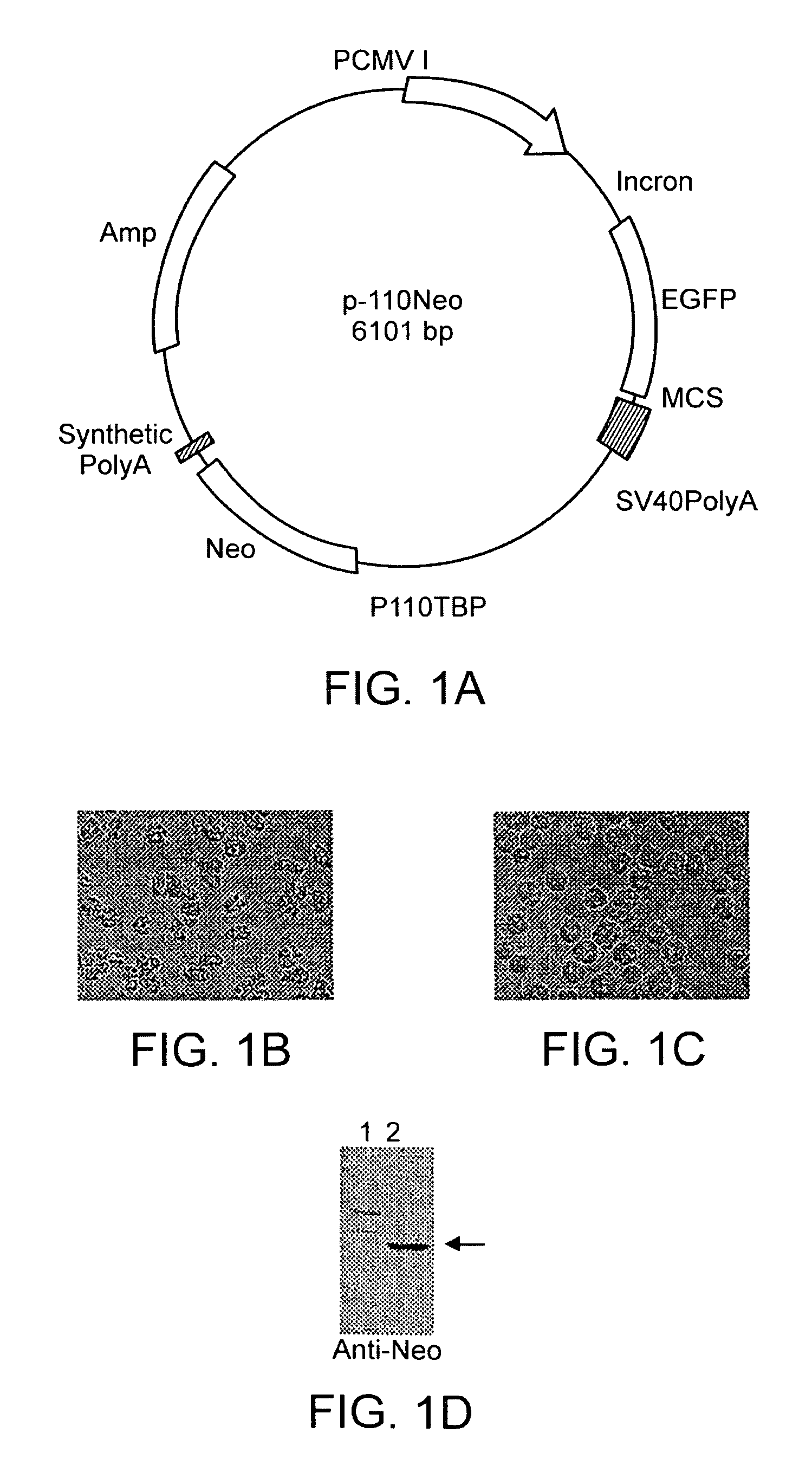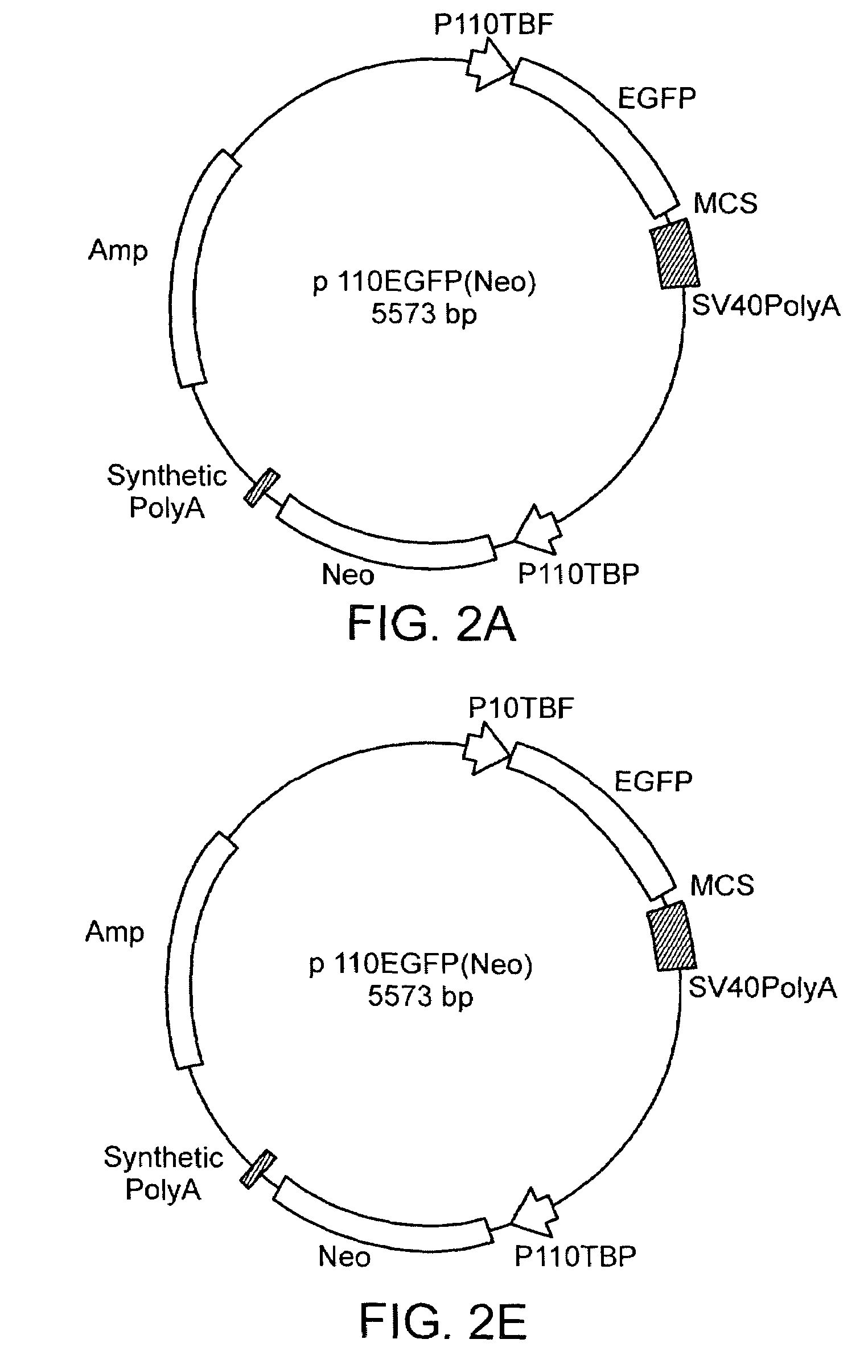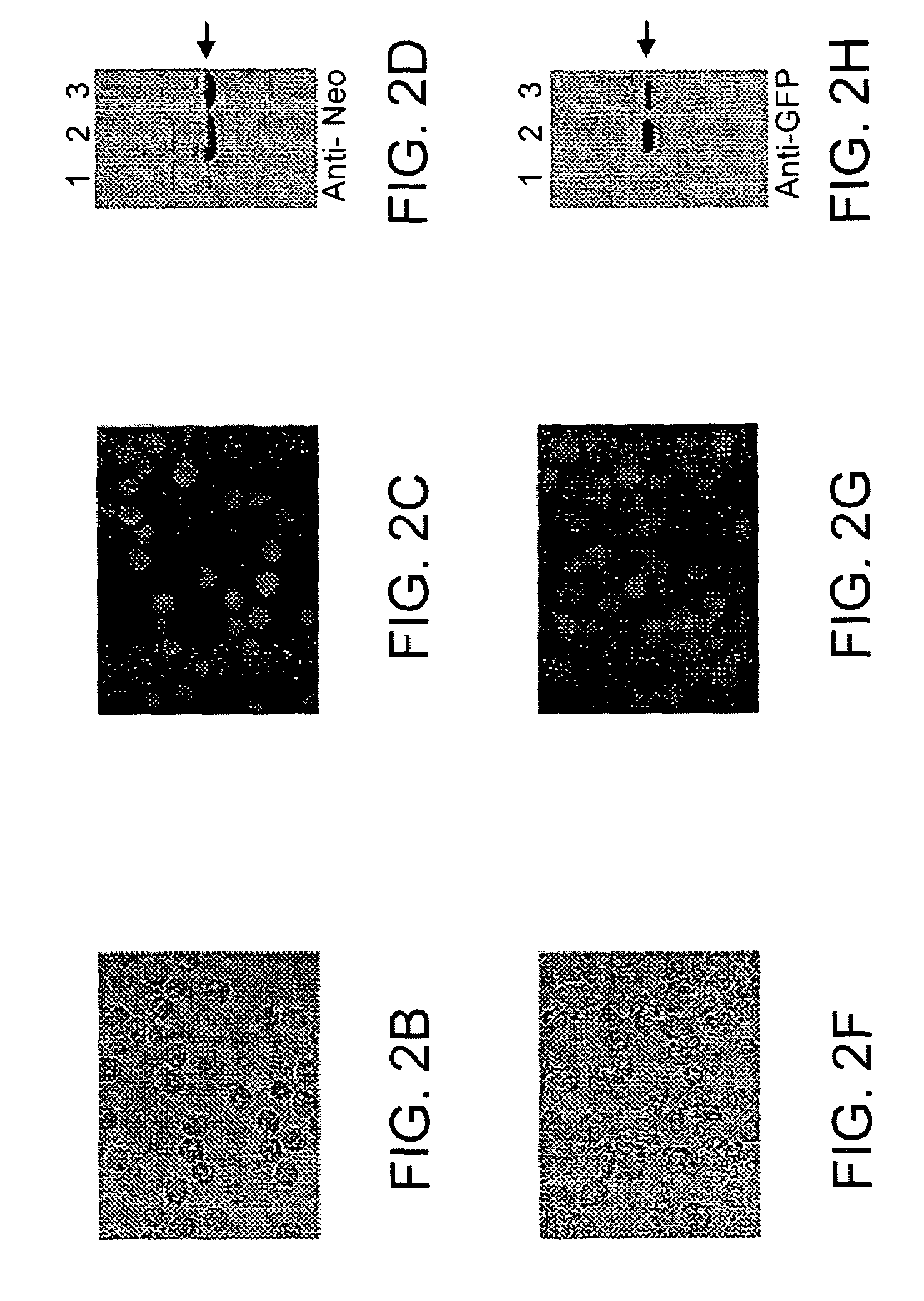Stable Acanthamoeba protein expression systems
a protein and protein technology, applied in the field of protein expression, can solve the problems of inability to produce material acceptable for therapeutic use, unacceptable unacceptable clinical applications for products such as recombinant antibody fragments produced by i>e. coli /i>fermentation technology, etc., and achieve stable transfection system and stable transfection o
- Summary
- Abstract
- Description
- Claims
- Application Information
AI Technical Summary
Benefits of technology
Problems solved by technology
Method used
Image
Examples
example 1
Sensitivity of Acanthamoeba to Neomycin G418.
[0063]As a preliminary experiment, the sensitivity of untransfected Acanthamoeba to neomycin G418 was examined by culturing cells in the presence of varying concentrations of neomycin G418. Concentrations of neomycin G418 at or above 10 μg / ml were found to completely inhibit cell growth (not shown). Growth is inhibited to a lesser extent by 5 μg neomycin / ml. After extended periods in the presence of neomycin G418, cells die as evidenced by lysis and loss of visible cells (not shown). In order to ensure complete suppression of growth during transfection experiments, selection for neomycin G418 resistance was done at 50 μg neomycin / ml unless otherwise noted.
example 2
Stable Transfection of Acanthamoeba and Expression of Neomycin Phosphotransferase
[0064]The Acanthamoeba TBP gene promoter from −110 to the ATG initiation codon (+68) was inserted within the SV40 promoter upstream of the neomycin phosphotransferase gene in plasmid pCI-EGFP (FIG. 1) to generate the plasmid p-110Neo. The Acanthamoeba TBP gene promoter was used because it has been thoroughly characterized in vitro (10, 13, 40, 47, 48) and because the viral promoters present in pCI-EGFP are not functional in Acanthamoeba (not shown). Acanthamoeba were transfected with p-110Neo and grown in medium containing 50 μg neomycin G418 / ml. After several days, cell growth became apparent as determined microscopically. Cells were transferred to fresh neomycin G418-containing medium and grown and passaged several times. Transfected cells are quite normal in appearance, but are rather rounded when compared to control cells grown in the absence of neomycin G418 (FIGS. 1B and C). Transfected cells have...
example 3
Expression of Neomycin Phosphotransferase and EGFP
[0066]While the experiments described above provide a proof of concept for stable transfection, they formally left open the possibility that only some cells are transfected, and resistance in the population as a whole was a consequence of inactivation of neomycin G418 by a sub-population. In addition, for stable transfection to be useful, expression of a second reporter gene is necessary in order to examine promoter structures or express proteins other than neomycin phosphotransferase. We therefore added a cassette containing the EGFP coding region (50, 51) downstream from a second copy of the Acanthamoeba TBP gene promoter to produce the EGFP and neomycin phosphotransferase expression vector p-110EGFP(Neo) (FIG. 2). Cells transfected with this vector are similar in appearance to those expressing neomycin phosphotransferase alone, but have a more rapid growth rate (8 h) and express both EGFP and neomycin phosphotransferase as determi...
PUM
| Property | Measurement | Unit |
|---|---|---|
| temperature | aaaaa | aaaaa |
| temperature | aaaaa | aaaaa |
| volume | aaaaa | aaaaa |
Abstract
Description
Claims
Application Information
 Login to View More
Login to View More - R&D
- Intellectual Property
- Life Sciences
- Materials
- Tech Scout
- Unparalleled Data Quality
- Higher Quality Content
- 60% Fewer Hallucinations
Browse by: Latest US Patents, China's latest patents, Technical Efficacy Thesaurus, Application Domain, Technology Topic, Popular Technical Reports.
© 2025 PatSnap. All rights reserved.Legal|Privacy policy|Modern Slavery Act Transparency Statement|Sitemap|About US| Contact US: help@patsnap.com



